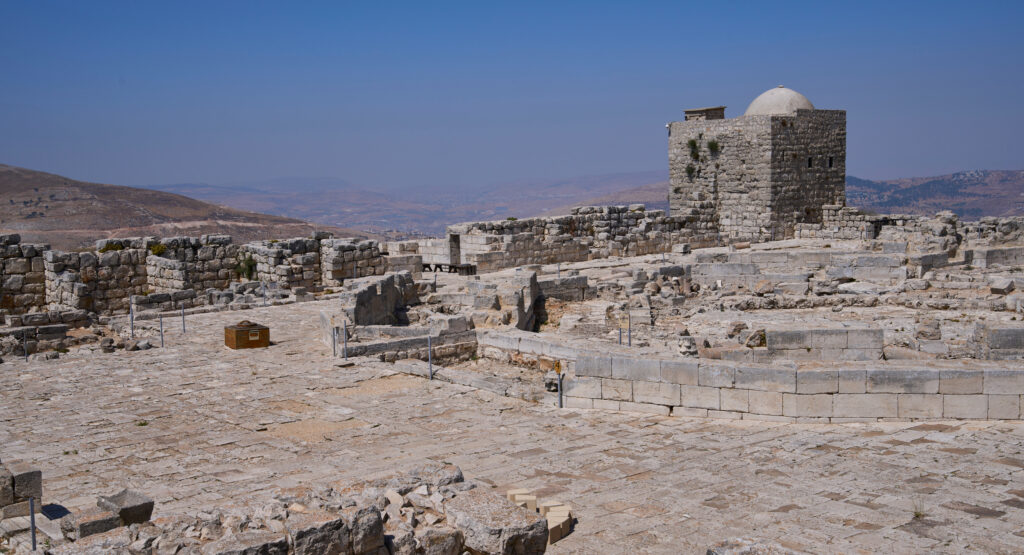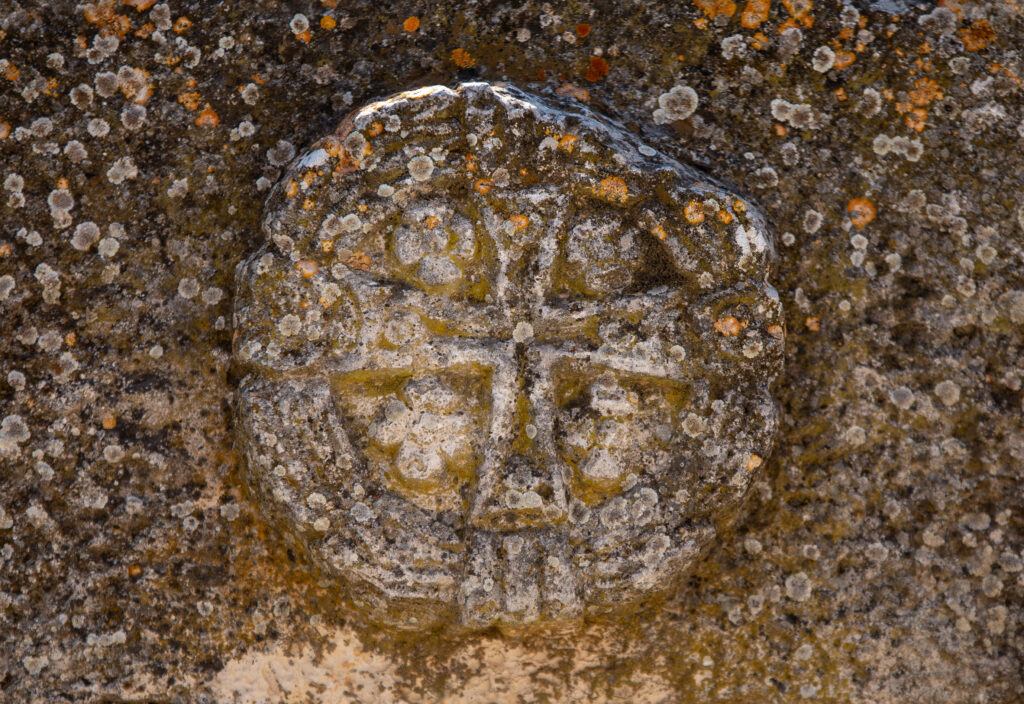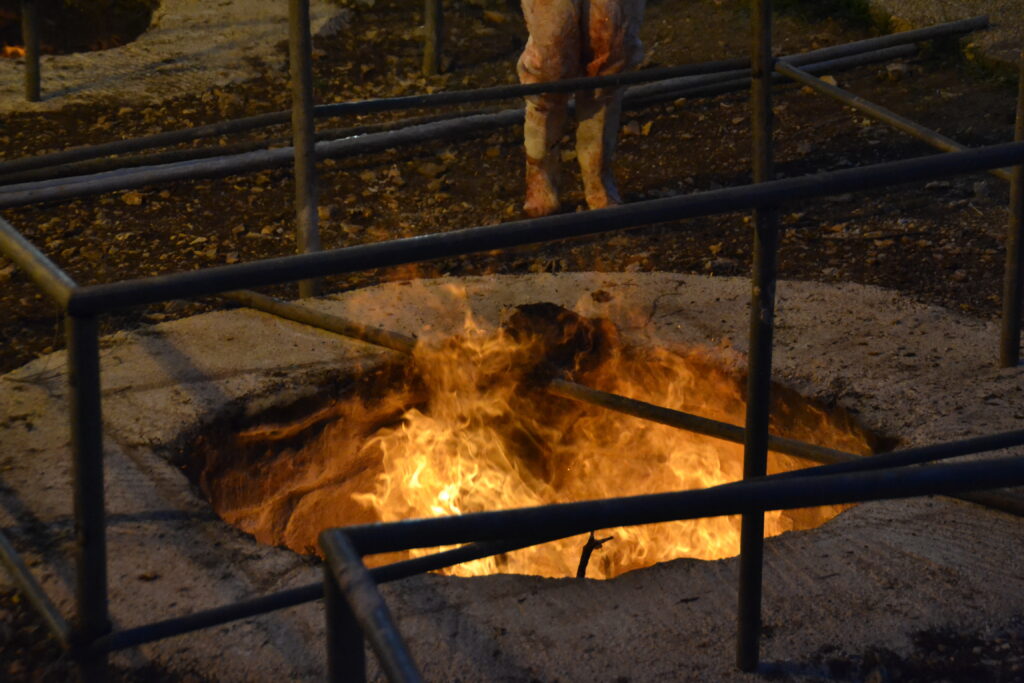Who are the Samaritans?
The Samaritans hold a significant and complex place within biblical history, often in two specific contexts. One highlights their unique cultural and religious identity. The other describes their contentious relationship with neighboring groups. Let’s explore who the Samaritans were in the Bible, and take a look at the modern-day Samaritan community in Israel.
The Samaritans, the Assyrian Exile and the Jews
The Samaritans’ story in the Bible is intertwined with the broader narrative of the Israelites. It particularly pertains to the Assyrian conquest of the Kingdom of Israel in 722 BC, called also the Assyrian Exile.
This event marked a pivotal moment that led to the deportation of the Israelite elite and their replacement with foreign populations (2 Kings 17:24). These newcomers, who settled in the region of Samaria, eventually intermarried with the remaining Israelites, giving rise to the Samaritan community.
The Samaritans claimed partial descent from Israelite tribes of Ephraim and Manasseh. But they set themselves apart religiously and ethnically from the Jews. This division was further exacerbated by differing views on the rightful center of worship.
The Samaritans built their temple on Mount Gerizim, claiming it as the location chosen by Moses. Meanwhile the Jews maintained that the only legitimate place of worship was the Temple in Jerusalem.
These religious differences are spotlighted in several biblical passages, but most notably in the New Testament. More on that later.
Samaria in the Bible
From Biblical records we know that the land of Samaria occupies a unique and noteworthy position. It is situated between Judea to the south and Galilee to the north. Historically, this region corresponds to the central part of what is today the West Bank.
But Samaria’s significance stems not only from its physical location. The complex social and religious dynamics defined its relationship with the surrounding Jewish territories during the Biblical period.
The Samaritans and their interactions with the Jewish people, as depicted in the Bible, reflect a complex relationship marked by religious, ethnic, and cultural distinctions. These biblical accounts offer insight into the historical and social dynamics between Jews and Samaritans.
Bible References to Samaritans in the Old Testament
The Samaritans are mentioned in various contexts within the Bible. The religious and ethnic distinction between Samaritans and Jews led to mutual hostility and prejudice, making interactions infrequent and often tense.
While the term “Samaritan” as such is not directly used in the Old Testament, the origins and the tensions leading to the emergence of the Samaritan identity are rooted in events described in the Hebrew Bible.
After Solomon’s reign, the kingdom of Israel split into the northern kingdom of Israel and the southern kingdom of Judah. Samaria later became the capital of the northern kingdom (1 Kings 12). This laid the groundwork for the distinct identity that would develop into the Samaritan community.
With the Assyrian conquest of the northern kingdom came the deportation of the Israelites from their land (2 Kings 17). This lead to foreign peoples settling in the region, and thus contributed to the formation of the Samaritan identity (as they intermingled with the remaining Israelites).
Finally, the Jews returned from exile and began rebuilding Jerusalem’s temple. They had to then face the opposition from the inhabitants of Samaria. This opposition was a manifestation of the deep-seated enmity between the two groups.
Jesus and the Samaritans
The New Testament records several instances where Jesus breaks with the known conventions. Most notably in his interactions with the Samaritan woman at the well (John 4:1-42) and his parable of the Good Samaritan (Luke 10:25-37).
Jesus spoke with a Samaritan woman at Jacob’s well in Sychar, a town in Samaria. This interaction was notable for crossing significant social boundaries of the time, including gender and ethnic divisions.
Perhaps the most famous reference to the Samaritans was Jesus’ parable about the compassionate figure who helped a man beaten by robbers. While a priest and a Levite passed by without assisting, the good Samaritan was the “hero”, showing the importance of loving one’s neighbor beyond societal divisions.
Using the example of Samaritans, Jesus underscored themes of compassion, social boundaries, and the expansive nature of his ministry.
More New Testament References
Among the ten lepers healed by Jesus (Luke 17:11-19), only one returned to thank Him. The man is noted to be a Samaritan. Again, the Samaritan is used as an exemplar of virtues, like gratitude and faith.
When Jesus traveled to Jerusalem, He passes through a Samaritan village where He is not welcomed because He is headed to Jerusalem (Luke 9:51-56. This reflects the historical animosity between Jews and Samaritans, rooted in disputes over the correct place of worship.
The Book of Acts mentions Samaria as an early center of Christian evangelism and activity. In chapter 1, Jesus’ said to His followers: “you shall receive power when the Holy Spirit has come upon you; and you shall be witnesses to Me in Jerusalem, and in all Judea and Samaria, and to the end of the earth.” (Acts 1:8, emphasis added)
After the martyrdom of Stephen, Philip goes to the city of Samaria, where he preaches and performs miracles, leading to the conversion of many Samaritans (Acts 8:5-25). This spread of Christianity into Samaria marks a significant step in the expansion of believers beyond purely Jewish communities.
Who are the Samaritans now?
Today, the Samaritan community numbers approximately 800 individuals in Israel.
They are divided between their ancestral home near Mount Gerizim in Nablus and a newer community in Holon. This split geographic existence mirrors the dual identity they navigate—balancing their ancient heritage with the practicalities of living in a region marked by modern political complexities.
Despite their small numbers, the Samaritans have maintained a distinct cultural and religious identity. Their practices are rooted in a strict interpretation of the Torah, which they consider the ultimate authority.
Interestingly, their religion closely mirrors the ancient Israelite faith, including celebration of religious festivals. A noteworthy feast among the Samaritans is the Passover, during which they perform ancient rites and sacrifices on Mount Gerizim.
Samaritans Today and the Passover
In the modern era, the Samaritan community, though small, remains a vibrant testament to the endurance of ancient traditions in contemporary times. This resilience is most vividly displayed in their observance of Passover.
The festival highlights their distinct identity within the broader mosaic of Middle Eastern cultures. The Passover sacrifices are perhaps the most significant religious event for the Samaritan community, embodying their deep commitment to preserving their ancient rituals.
Unlike Jewish Passover practices, the Samaritan observance includes a public sacrifice of sheep or goats on Mount Gerizim (their holiest site). This ritual has been maintained for over 3,600 years according to Samaritan tradition.
The Ritual on Mount Gerizim
The Passover sacrifice takes place at twilight on the eve of Passover, when the Samaritans dress in white robes as a symbol of purity. The ceremony begins with prayers and readings from the Samaritan version of the Torah. Then, their high priest leads the community in the sacrificial ritual.
The ritual involves the slaughtering of the sheep or goats in accordance with ancient rites. The meat is then roasted in specially prepared pits, signifying the way the Israelites prepared their meals during their exodus from Egypt.
Following the sacrifice, the community gathers to partake in a communal meal, eating the roasted meat along with unleavened bread and bitter herbs (Exodus 12:8). This communal gathering is not just a religious observance but a reinforcement of communal bonds and an affirmation of their shared identity and heritage.
The ritual also represents the community’s resilience and its commitment to preserving its traditions against the backdrop of the modern world. In a time when many ancient practices have been lost or transformed beyond recognition, the Samaritans’ Passover sacrifice stands as a testament to the enduring nature of their faith and culture.
The Samaritan Story Continues
The modern Samaritans have navigated a unique path through the complex socio-political landscape of the Middle East. They continue to maintain their distinct identity while also integrating into the broader Israeli and Palestinian societies.
Most Samaritans are fluent in both Hebrew and Arabic. They serve in the Israeli army, which highlights their integration into Israeli society. Yet, they also continue to face challenges related to their small population size, including issues of genetic diversity and preservation of their heritage.
Samaritans, Palestinians, and Israel
The unique approach of Jesus to the Samaritans can help us face the challenges of the Israeli-Palestinian conflict today. Jesus demonstrated a heart of compassion towards the Samaritans, who were not accepted by most of His fellow Jews.
They were privileged to be the only people besides the Jews who experienced the personal touch of the Messiah. After His resurrection, Jesus instructed His disciples to consider the Samaritans as the very first non-Jews to receive the Gospel.
Likewise, the Church today is called to show similar compassion in reaching out to the Palestinian people. We owe a special devotion in particular to the believers among them.
But we also learn from Jesus something profound. Despite the fact that Samaritans had lived in the land of Israel for hundreds of years, Jesus still considered them ‘foreigners’. It surely offended them.
Jesus did not deny their right to live in the land. Nevertheless, He also affirmed the unique covenant promises enjoyed by Israel, including the promise of the land.

God’s Perfect Plan – From Israel to You: Free PDF Download
The Bible is full of God’s promises that can encourage our faith. Together, these promises make up one master plan of God.
You’re about to discover God’s perfect plan through the lens of 25+ references throughout Scripture.
Articles Related to Who were the Samaritans in the Bible and who are they today?
Estimated reading time: 9 minutes


